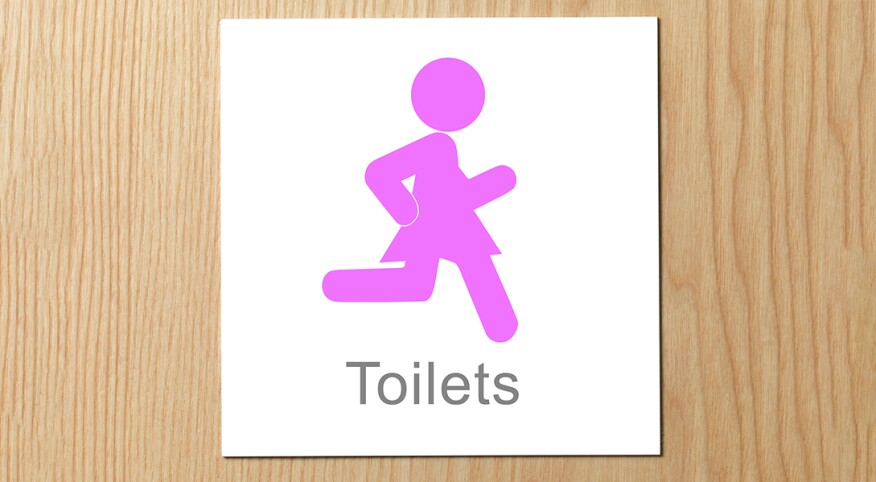If you’re blessed enough to arrive at middle age sans bodily aches and pains, consider yourself one of the lucky few. From lower back pain to achy knees or those creaky slow-motion joints and hurting shoulders, the eventual breakdown of the muscle groups in middle-aged bodies is something even healthy people rarely can avoid. Those are also the kind of body breakdowns that women generally don’t hesitate in treating with physical therapy and proper self-care.
But what about the other kinds of body breakdowns? You know, the ones we are just told to live with and get over. Well, ask any middle-aged woman who has had children if she ever pees a little when she coughs, sneezes or engages in any type of upbeat physical activity, and you’ll probably get a hearty “Of course I do, who doesn’t?” type of answer. Urinary incontinence has long been a hidden, shared condition that almost every woman will suffer from at some point in their lives, and yet it’s also something that nobody thinks is treatable without invasive “bladder tacking” surgery. Most disorders that occur with the pelvic floor are the result of childbirth, hormone changes in midlife and anatomical issues within the urinary tract, making them a highly common epidemic among almost all females who have had children. And yet the pelvic floor, not unlike our knees assisting us with walking, is responsible for a bevy of vital functions — from childbirth to urination, sexual appreciation, defecation, continence, lifting, sitting, walking and exercise —
and it’s working 24 hours a day. So when it comes down to it, getting physical therapy for your pelvic floor may just be more important than therapy for your knees, because what good is Zumba if you’re peeing while doing it?
Many women are surprised to learn that pelvic-floor physical therapy exists, and feel deceived that their primary care doctor or ob-gyn has never suggested it. They may feel it’s only for highly active women like runners, and not really a necessity for minor leaks here and there. They may have been told it’s just something to live with and get over, and embrace the use of absorbent undergarments for incontinence. They may also be getting good at squeezing their legs together when they feel a sneeze coming on, and suffering in silence. But recently (and thankfully), pelvic-floor physical therapy is starting to be much more common, less mysterious and more accessible, as physical therapists have smartly recognized the increased need for it and have chosen to specialize in this intimate, yet crucial part of the female anatomy.
If you’re a bit squeamish about what pelvic-floor physical therapy involves (and exactly what set of muscles are included in your pelvic floor), don’t be. Both are anything but scary, and simple to explain. First, the pelvic floor is a group of muscles and connective tissue that is attached to the bottom of your pelvic bones. It acts as a “hammock,” and is responsible for holding up, so to speak, your bladder, colon, rectum, vagina, cervix and uterus. It also helps give your hips and trunk some stabilization, and is the same group of muscles that contract during orgasm, providing sexual sensations. Those are some pretty huge jobs, so when your floor isn’t in the best shape anymore, multiple body systems can suffer and it can impact your emotional and sexual health.
When you decide pelvic-floor physical therapy may be right for you, your therapist will work with on a treatment plan to focus on relief for your symptoms and strengthening your floor — with the ultimate goal to improve your quality of life. You may not realize that pelvic pain, painful intercourse, bowel incontinence, lower back pain and even constipation can all be symptomatic of pelvic-floor issues. Your therapist may use different methods that include biofeedback, electrical stimulation, vaginal weight therapy and manual therapy. You will be instructed on how to properly exercise your floor at home (think Kegels but with more variety), and how to modify your current exercise program to prevent further damage. Don’t worry, pelvic-floor physical therapists are trained to be sensitive and compassionate about how intimate this kind of health care can be; but feel free to visit more than one therapist for an interview, until you find one who makes you feel the most comfortable.
If you’re simply not brave enough to see a therapist, there are therapies you can try in the privacy of your own home. As a matter of fact, there’s an app for that: Elvie is a pelvic-floor trainer that you use at home. It consists of a small, medical-grade silicon egg-shaped instrument that you insert into your vagina. You then connect it to the Elvie app, which gives instructions and monitors your squeezing and contracting exercises. The app will guide you through a variety of five-minute workouts, and you’ll be able to track your progress and see improvements as you go. Just remember. This is not a substitute for a personalized treatment plan or the advice and care of a trained medical professional.
Don’t put off pelvic-floor therapy any longer. You were not meant to just “deal” with incontinence, so why not fix what’s broken? You’ll be happy you did.

Getty Images









